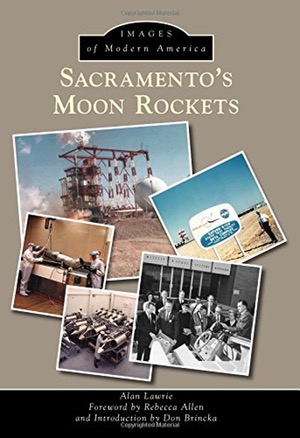Review: Sacramento’s Moon Rocketsby Jeff Foust
|
| One notable benefit of those test site explosions was that it allowed NASA to calibrate the explosive force of the combination of liquid hydrogen and liquid oxygen. |
The test site, known by Douglas as the Sacramento Test Facility, or SACTO, had its origins in the mid-1950s, when Douglas won a contract to develop the Thor missile and needed a test site. Douglas purchased 2,000 acres of property that Aerojet had acquired several years earlier in Rancho Cordova for its own engine testing—land that had been used for gold mining at the turn of the 20th century and rendered unusable for farming or other development as a result—and established a test site. Those facilities were expanded when Douglas won the contract to build the S-IVB stage.
The book is largely a pictorial history of SACTO, covering the site’s development and use through the Apollo program in images and captions. That includes chapters on the site’s development, transportation of stages (initially by ship, and later by Super Guppy aircraft), testing, and several notable explosions that took place there during those tests. One notable benefit of those explosions, former Douglas chief test conductor Don Brincka notes in the book’s introduction, was that it allowed NASA to calibrate the explosive force of the combination of liquid hydrogen and liquid oxygen propellants: while NASA once thought that this combination would have the explosive force equivalent to 65 percent of TNT, it turned out to have only five percent the force.
The book’s last chapter revisits the site near the present day (2006 and 2013), long after the test site had been abandoned. Douglas (later McDonnell Douglas, and now part of Boeing) didn’t use the site again after completing acceptance testing of the last S-IVB stages in 1969, and sold the site back to Aerojet (now Aerojet Rocketdyne) in the 1980s. Those photographs of the remaining structures were part of efforts to document the sites for Historic American Engineering Record before they were demolished.
Sacramento’s Moon Rockets is not a thorough history of the development and later decay of SACTO: the book relies on photos, and not other historical documents, to tell the story of how Douglas used the test site during the early Space Age. It is, though, a reminder of the vast scope of the Apollo program, one that made use of facilities long since forgotten to achieve the goal of landing humans on the Moon.
